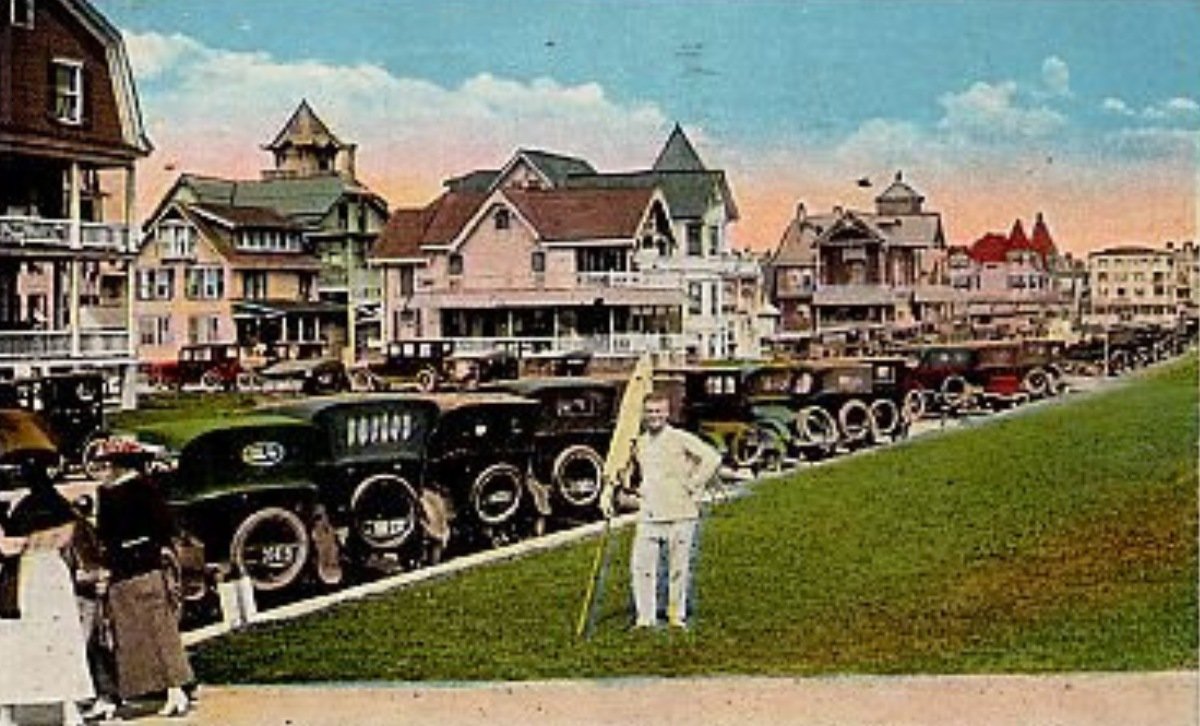History of
Ocean Grove
The Victorian era brought with it many changes in lifestyle that, at the time, were perceived to come about with lightning speed. The stresses and pressures of society in that era had grown at an alarming pace leading Rev. Ellwood Stokes, the first President of the Ocean Grove Camp Meeting Association, to write that, “brain and nerve were taxed to the last extreme by these refinements, until the physical was often prostrated and the mind imperiled.”
In May, 1869 a group of Methodist ministers felt called to search along the New Jersey coast for a suitable camp meeting location - a place of respite where “religion and recreation should go hand in hand.” After an extended search, they came upon a virtually uninhabited grove of trees, free from mosquitoes which had tormented them at other sites previously visited and pleasantly surrounded by two lakes and the Atlantic Ocean. Despite its isolation, Ocean Grove’s founders later wrote that, “it seemed to us that a more magnificent site for cottages could hardly be found.”
Returning in but a few weeks, twenty persons gathered in tents to begin clearing the land and held their first prayer meeting on July 31st. Rev. Stokes felt led to remind those gathered of the first words of Genesis 1:1 - “In the beginning God...,” adding, “God is here,” in Ocean Grove’s beginning and he trusted, would remain and be there to the end.
From that humble start, Ocean Grove grew and continued to provide a place of respite for those seeking to come away from the hectic pace of life. Permanent buildings were added for worship and cottages were established year ’round until an entire community was formed. The original members of the Association laid out what would become one of the first planned communities of the Victorian age.
In 1870 the New Jersey State Legislature granted the Ocean Grove Camp Meeting Association a charter setting Ocean Grove aside as a place of perpetual worship to Jesus Christ. Promoting that original purpose remains vital as the Camp Meeting continues to provide a place for spiritual birth, growth and renewal in a Christian seaside setting.
Our lives today are even more hectic than Ocean Grove’s founders could have ever imagined, the tyranny of the urgent often drives us, and a place of peace and relaxation is just as necessary to rejuvenate body and soul. We invite you to discover today what Ocean Grove’s founders did 150 years ago. Indeed, “a more magnificent site,” can still hardly be found.

About the Great Auditorium
The Great Auditorium was constructed in 1894 and is mostly unchanged. The wooden building rests on bridge-like iron trusses laid on stone foundations. It features numerous "barn door" entrances with colored glass, dormers, and panels that open for ventilation. Originally the Auditorium could accommodate an audience of almost 10,000, before many sections of smaller, wooden seats were replaced in later years with cushioned, theater-style seating having armrests; at present it can seat 6,250 persons.
The Auditorium's acoustics, resulting from its barrel-vaulted wooden ceiling, have been widely acclaimed; famed conductor Leonard Bernstein once compared it to Carnegie Hall. In the days before electronic amplification, this allowed a preacher to be heard throughout the vast space. The building still features lighting systems quite advanced for their time, such as the parallel rows of incandescent bulbs that adorn the varnished wood ceiling paneling. Also novel is a large American flag (c. 1916) covered with light bulbs that flash in an undulating manner. Illuminated signs, possibly some of the oldest surviving of that type, flanking the organ's pipe work, proclaim "Holiness to the Lord" and "So be ye holy," a reflection of the emphasis at camp meetings, along with the illuminated Memorial Cross, placed on the Auditorium's front facade at the end of World War II.

Great Auditorium Hosted Visits
Summer, Mondays through Fridays
12:30 PM - 2 PM
Visitors are invited, free of charge, to view the interior of this historic structure. Hosts can answer general questions about the building’s history and usage.
Meet on the South Side of the building during visit hours to participate.
For guidance to the meeting point, please follow one of these links on your phone’s web browser:






